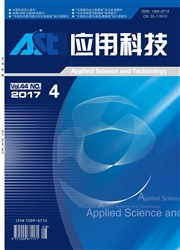

 中文摘要:
中文摘要:
Texture analysis is a fundamental field in computer vision. However,it is also a particularly difficult problem for no universal mathematical model of real world textures. By extending a new application of the fractional Fourier transform( Fr FT) in the field of texture analysis,this paper proposes an Fr FT-based method for describing textures. Firstly,based on the Radon-Wigner transform,1-D directional Fr FT filters are designed to two types of texture features,i. e.,the coarseness and directionality. Then,the frequencies with maximum and median amplitudes of the Fr FT of the input signal are regarded as the output of the 1-D directional Fr FT filter. Finally,the mean and the standard deviation are used to compose of the feature vector. Compared to the WD-based method,three benefits can be achieved with the proposed Fr FT-based method,i. e.,less memory size,lower computational load,and less disturbed by the cross-terms. The proposed method has been tested on16 standard texture images. The experimental results show that the proposed method is superior to the popular Gabor filtering-based method.
 英文摘要:
英文摘要:
Texture analysis is a fundamental field in computer vision. However,it is also a particularly difficult problem for no universal mathematical model of real world textures. By extending a new application of the fractional Fourier transform( Fr FT) in the field of texture analysis,this paper proposes an Fr FT-based method for describing textures. Firstly,based on the Radon-Wigner transform,1-D directional Fr FT filters are designed to two types of texture features,i. e.,the coarseness and directionality. Then,the frequencies with maximum and median amplitudes of the Fr FT of the input signal are regarded as the output of the 1-D directional Fr FT filter. Finally,the mean and the standard deviation are used to compose of the feature vector. Compared to the WD-based method,three benefits can be achieved with the proposed Fr FT-based method,i. e.,less memory size,lower computational load,and less disturbed by the cross-terms. The proposed method has been tested on16 standard texture images. The experimental results show that the proposed method is superior to the popular Gabor filtering-based method.
 同期刊论文项目
同期刊论文项目
 同项目期刊论文
同项目期刊论文
 Segmentation of green vegetation of crop canopy images based on mean shift and Fisher linear discrim
Segmentation of green vegetation of crop canopy images based on mean shift and Fisher linear discrim 期刊信息
期刊信息
